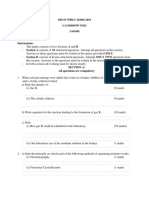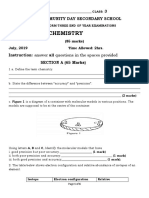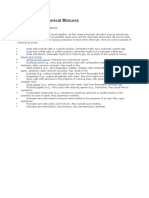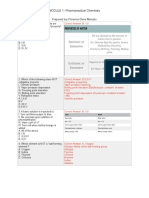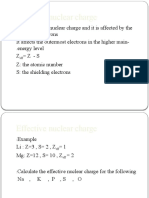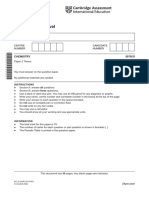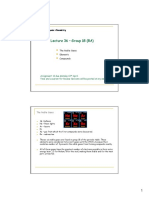0% found this document useful (0 votes)
19 views6 pages9 2023 Che 1 Sem Retyped
The document consists of a series of questions related to states of matter, atomic structure, principles of particle movement in gases and liquids, and the differences in melting points of carbon dioxide and diamond. It includes identification of elements, compounds, and mixtures, methods of separation, calculations involving isotopes, and explanations of gas behavior. The questions are designed to assess understanding of chemistry concepts and principles.
Uploaded by
methupasayuruCopyright
© © All Rights Reserved
We take content rights seriously. If you suspect this is your content, claim it here.
Available Formats
Download as PDF, TXT or read online on Scribd
0% found this document useful (0 votes)
19 views6 pages9 2023 Che 1 Sem Retyped
The document consists of a series of questions related to states of matter, atomic structure, principles of particle movement in gases and liquids, and the differences in melting points of carbon dioxide and diamond. It includes identification of elements, compounds, and mixtures, methods of separation, calculations involving isotopes, and explanations of gas behavior. The questions are designed to assess understanding of chemistry concepts and principles.
Uploaded by
methupasayuruCopyright
© © All Rights Reserved
We take content rights seriously. If you suspect this is your content, claim it here.
Available Formats
Download as PDF, TXT or read online on Scribd
/ 6




























